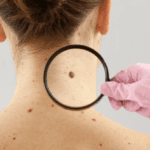 Mysteries
Mysteries  Mysteries
Mysteries  History
History 10 Surprising Stories About the Texas Rangers
 Humans
Humans 10 Philosophers Who Were Driven Mad by Their Own Theories
 Miscellaneous
Miscellaneous 10 Video-Game-Worthy Weapons and Armors from History
 Weird Stuff
Weird Stuff 10 Psychics Who Accurately Predicted Wartime Events
 The Arts
The Arts 10 Pieces of Art Inspired by a Broken Heart
 Health
Health 10 Science Fiction-Sounding New Medical Treatments
 History
History 10 Surprising Facts About the Father of Submarine Warfare
 Space
Space Ten Astonishing New Insights into Alien Worlds
 Weird Stuff
Weird Stuff 10 Bizarre Summer Solstice Rituals Still Practiced Today
 Mysteries
Mysteries Top 10 Haunting Facts About the Ghost Ship MV Alta
 History
History 10 Surprising Stories About the Texas Rangers
 Humans
Humans 10 Philosophers Who Were Driven Mad by Their Own Theories
Who's Behind Listverse?

Jamie Frater
Head Editor
Jamie founded Listverse due to an insatiable desire to share fascinating, obscure, and bizarre facts. He has been a guest speaker on numerous national radio and television stations and is a five time published author.
More About Us Miscellaneous
Miscellaneous 10 Video-Game-Worthy Weapons and Armors from History
 Weird Stuff
Weird Stuff 10 Psychics Who Accurately Predicted Wartime Events
 The Arts
The Arts 10 Pieces of Art Inspired by a Broken Heart
 Health
Health 10 Science Fiction-Sounding New Medical Treatments
 History
History 10 Surprising Facts About the Father of Submarine Warfare
 Space
Space Ten Astonishing New Insights into Alien Worlds
 Weird Stuff
Weird Stuff 10 Bizarre Summer Solstice Rituals Still Practiced Today
10 Gross And Horrible Facts About Babies
We all know that babies are gross. That’s just a fact of life. Parents are often surprised by how gross their lives have become after their little ones are born. Diaper changes lose their shock value, the smell of spit-up clings to everything, and eating food that’s been on the floor becomes totally normal. That’s just how it goes when you have to shepherd a little human with a mind of his own and curiosity to best any cat.
But diapers and spit-up are only the tip of the disgusting iceberg when it comes to babies. Those darling little bundles of joy have horrible secrets that will turn your stomach and make you question any future reproductive plans. Cleanliness may be next to godliness, but babies don’t know that yet.
10 Babies Have Two Sets Of Teeth
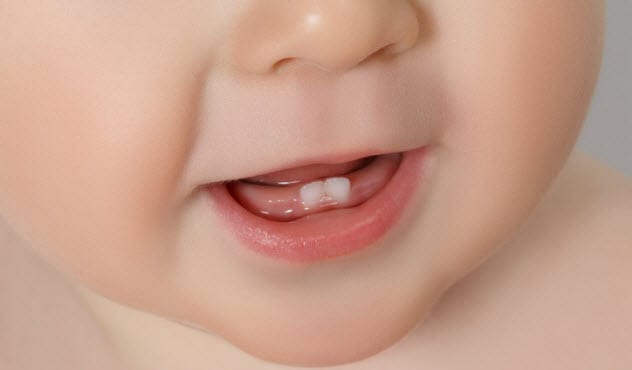
We’ve all had baby teeth, lost them, got some kickback from the tooth fairy, and then grew some proper adult teeth in their place. That’s a normal part of aging that we all go through. There’s just one teeny-tiny problem with that story.
When those adult teeth show up, we aren’t really growing them then. We actually grow all our baby teeth before we’re even born. After birth, adult teeth start to grow in behind them and stay in little pockets inside the jaw until we start to lose our baby teeth.[1]
We then become eligible for tooth fairy trade-ins and have significantly fewer teeth than a baby. Next time you see a baby’s sweet, gummy smile, remember that it is absolutely full of secret teeth.
9 Babies Have More Bones Than Adults
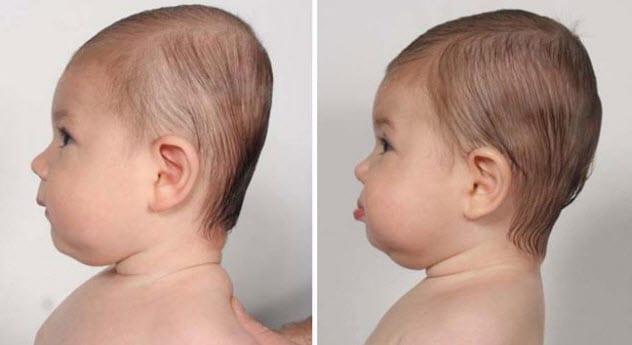
Speaking of things babies have more of than adults, babies have around 300 bones in their tiny bodies. Compare that with adults, who only have 206 bones. Babies start out with a lot of cartilage and separate plates that will later fuse to make their adult skeleton.
There’s a good reason for that, too. Baby bodies need to be flexible to pass through the birth canal. The largest part of a baby’s body, the head, is made up of several bone plates that can shift during birth.
That’s definitely necessary and beneficial to the baby. But this also means that babies have a couple of soft spots, or fontanels, on their heads where the plates don’t touch.
The same flexibility that helps babies get out into the world can cause some problems once they’re there. If an infant lies on the soft spot on the back of his head for too long and too often, his head flattens out like a fallen souffle.
If left too long, the flattened back of the baby’s head can cause the entire head to warp into a teardrop shape. Possible treatments for a baby’s conehead resemblance can range from simply moving the infant to his stomach for playtime to having a special helmet made for him.[2]
8 Babies Have Huge Eyes
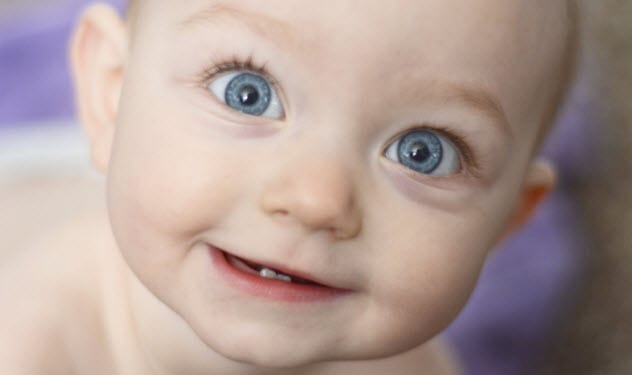
There’s something absolutely magical about how babies gaze up at you with their big, wide eyes. They look so trusting and full of wonder. The whole experience sparks something primal in us that prompts us to protect the vulnerable little ones. At the very least, it seems to make us coo and fuss.
And that is probably for the best. Because if you stop to think about it, those eyes start to look a little odd. It’s hard to put your thumb on it at first because babies can be distracting. But if you get to the bottom of it, you may notice that a baby’s eyes look a little bit too big.
That’s because they are fairly big. A newborn’s eyes are already roughly 70 percent of their adult size. That darling little one whose whole body fits in the crook of your arm has eyes almost the same size as your own.[3]
Keep in mind that babies also have two full sets of teeth in their jaws. Between those and the eyes, that’s a lot to fit in one little head. No wonder a baby’s head has to be about 25 percent of their body’s length.
7 Babies Start To Taste And Smell Before Birth
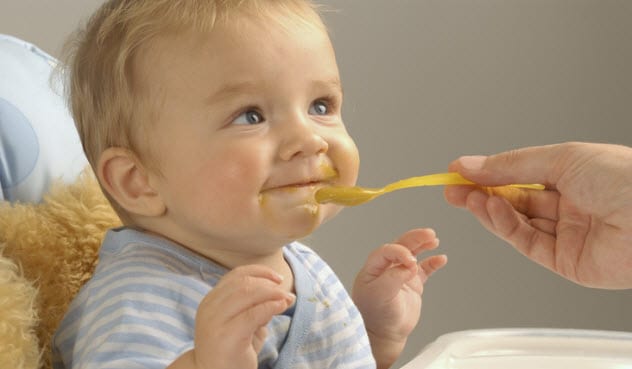
We all know that babies put everything they can get their teensy hands on into their mouths. Keys, fingers, and toys all end up in there eventually. It’s one of the ways they learn about the world around them. But most people don’t know that babies start tasting and smelling before they are even born.
You may wonder what they find to smell or taste inside a womb, and that’s a fair question. The answer is that they sample whatever ends up in the amniotic fluid around them. Foods such as vanilla, carrot, anise, mint, and even garlic will flavor the fluid. Some research has even shown that babies will prefer familiar flavors from their time inside once they are born.
That’s really neat, right? The amniotic fluid is a little gross, but otherwise, it’s pretty neat.
There’s one more thing about a baby’s taste buds that’s upsetting, though. Babies don’t just have taste buds on their tongues. Newborns may have them all over their mouths, down the back of their throats, and even all the way down to their tonsils.[4]
6 Babies Are Born Covered In Thick, White Goop
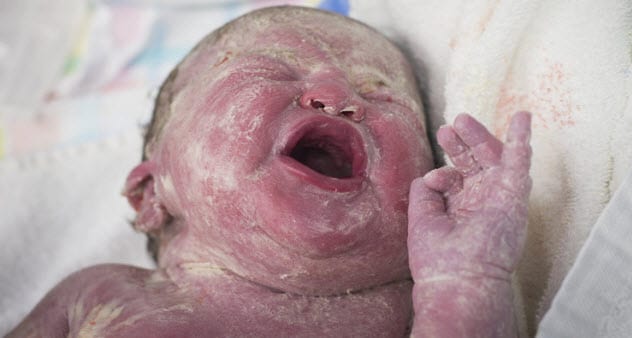
Inside the womb, babies are constantly moisturized. But the amniotic fluid is highly acidic, which isn’t the best thing for newly developed skin. Something else has to protect the fetus’s skin from the acidity and keep it as soft as a baby’s bottom.
That would be vernix, which has been described as waxy, cheesy, creamy, and milky. Babies are born covered in a thick, white layer of vernix. This substance does more than just protect the skin. It also dampens sound, insulates the body, and acts as a lubricant during birthing. It’s healthy and natural, but it does make babies look like they’ve been rolling in a big tub of cottage cheese.
It’s almost impossible to clean all the vernix off a newborn. If you do, you might actually be sad to see it go. Vernix keeps a baby’s skin moisturized and protected.[5]
Once it’s all gone, a baby’s skin dries out. And after months of being kept nice and moisturized, a baby’s skin becomes a flaky, peeling mess. Between one to three weeks, they’ll usually shed their entire first layer of skin. We might have to rethink the “soft as a baby’s bottom” bit.
5 Babies Menstruate
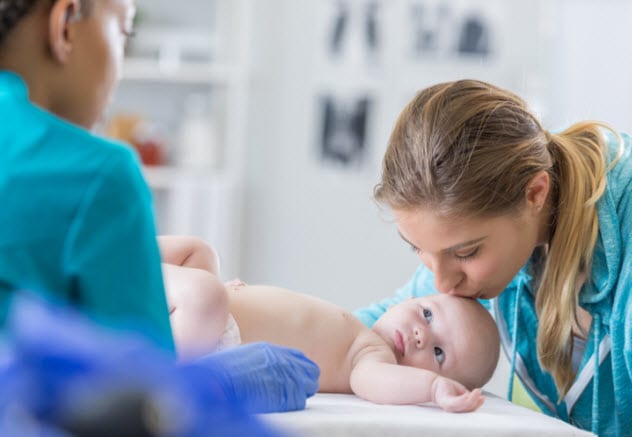
When in the womb, babies soak up everything they can from the adult’s body. That includes hormones like estrogen. Babies don’t have the need or ability to produce more, so estrogen levels drop to zero shortly after birth.
Estrogen causes a uterine lining to form, and the sharp drop in estrogen causes it to shed. So when the baby has a uterus, that’s exactly what happens.[6]
Still, imagine the sheer horror and confusion new parents may experience when they find blood in their newborn’s diaper. The discovery drives them to rush their little one to the hospital where they’re told that their baby is just menstruating at two days old and that’s totally normal. It’s a lot to process, even without the terrified scramble to the emergency room beforehand.
4 Babies Are Covered In Hair
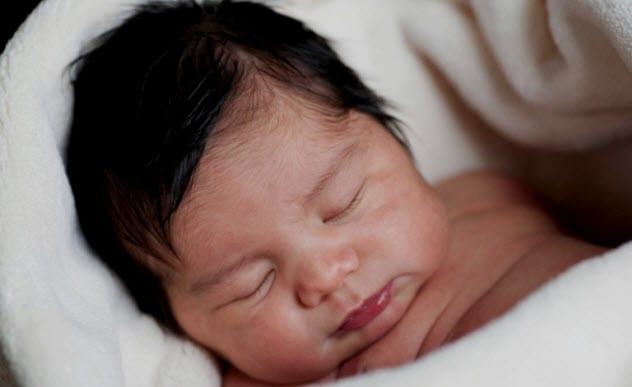
Everyone pictures their little bundle of joy differently during pregnancy, but we doubt anyone expects their baby to come out resembling the wolf man. But some babies do come out just like that, with hair all over their little bodies. This hair is called lanugo. It keeps the child warm inside the womb. It also keeps the equally gross vernix in place.[7]
Not every baby is born with this thick layer of hair all over. Most of the time, the baby will do just what you’d expect a tiny wolf man to do—shed. They shed right into their amniotic fluid and then absorb it along with everything else in there.
3 Babies Pee In The Womb And Then Drink It
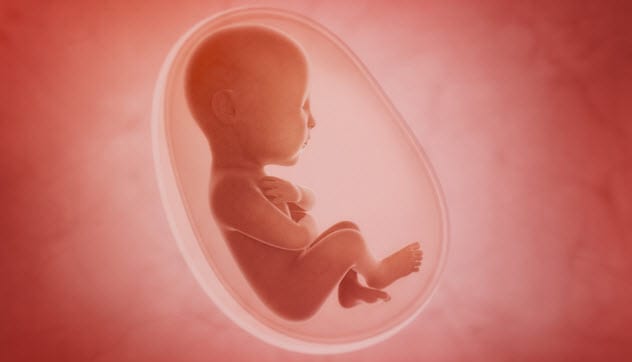
As we know, whatever is in the amniotic fluid gets absorbed into the baby. We usually think of the amniotic fluid as a liquid cushion full of nutrients, but it can made up of other things as well. After about week 10 of gestation, one of those “other things” becomes pee. That’s about when the baby’s bladder is developed enough to start passing liquid.[8]
Sitting in a bubble of your own urine is bad enough, but you know babies don’t stop there. Five weeks later, the fetus gains the ability to swallow. Each day, they swallow several ounces of amniotic fluid, pee and all. And, as we learned a few paragraphs ago, babies can taste things in the womb.
2 Babies Sometimes Poop In Utero, Too
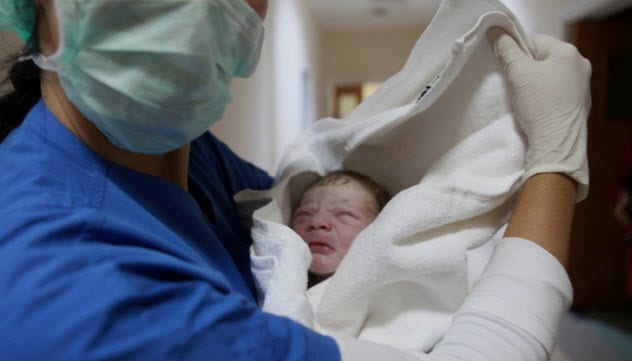
A baby’s first poop is called meconium. It usually happens just after birth, but some kids are a little too quick on the draw. In these cases, it can be passed in utero or in the birth canal. But where does meconium even come from—as babies don’t really eat until after birth?
Meconium tends to be made up of amniotic fluid and whatever the baby has shed into it. This ends up being mucus, bile, and lanugo. All that thick body hair that a baby sheds before birth gets swallowed or absorbed into the body again and becomes the bulk of the meconium.[9]
When it’s passed in the womb or birth canal, it can clearly be distressing for everyone involved. However, it’s actually most distressing for the baby. Babies born after passing meconium will occasionally have it in their noses and mouths. Nurses will then need to remove the meconium from the newborn’s airways before the infant can breathe properly.
1 Science Says You Should Probably Poop On Your Baby During Birth

When giving birth, most women want to avoid pooping more than most anything else. There are plenty of forums and articles with advice on how to avoid the dreaded delivery room poop. However, research may show that pooping during labor is good for the baby.
The muscles down there are all fairly close together. A pelvis is not very big when you consider all the functions that have to go on inside it. Experts advise that the muscles used to “go” tend to be the same muscles used to push during labor. As is rarely the case any other time in our lives, if there’s poop everywhere, something has probably gone right.
Beyond proper birthing technique, research shows that getting covered in poop during birth may help start up the infant’s microbiome, which is the helpful bacteria that lives in and on humans. It helps with digestion and strengthens the immune system. But newborns, unlike their parents, have virtually no microbiome. Since bacteria from the gut is in poop, getting doused in it at birth gives the baby a bit of a microbiome starter kit.[10]
But for that to happen, some poop does need to find its way into the baby’s gut, which is usually via the mouth. A baby’s ability to taste and smell at birth seems more like a cruel joke than a cool evolutionary quirk at this point.
Renee is an Atlanta-based graphic designer who enjoys researching strange topics and writing the occasional list.
Read more surprising facts about babies on 10 Extremely Surprising Facts About Babies and 10 Things You Didn’t Know Babies Could Do.



